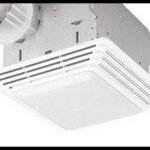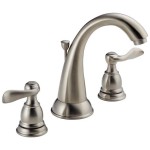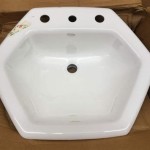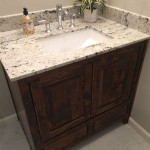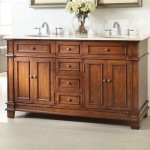Bathroom Vanity Design Ideas: A Comprehensive Guide
The bathroom vanity serves as a focal point and a functional element within the bathroom space. It provides storage, houses the sink, and contributes significantly to the overall aesthetic. Choosing the right vanity design can transform a bathroom from a purely utilitarian space to a stylish and well-organized sanctuary. This article will explore various bathroom vanity design ideas, covering styles, materials, layouts, and considerations for optimizing both form and function.
Selecting a bathroom vanity requires careful consideration of several factors. The size of the bathroom is paramount, as is the existing plumbing configuration. The desired style, storage needs, and budget also play crucial roles in determining the optimal vanity solution. This exploration of design ideas will offer a range of options to suit different bathroom sizes, architectural styles, and personal preferences.
Maximizing Space with Smart Vanity Layouts
The layout of a bathroom vanity significantly impacts the functionality and flow of the space. Optimizing the layout can make even a small bathroom feel more spacious and efficient. Different layout options cater to various needs and bathroom dimensions.
Single Vanity: The single vanity is a common choice for smaller bathrooms or powder rooms. It consists of a single sink and accompanying storage. Single vanities are available in a wide range of styles, from minimalist wall-mounted designs to traditional freestanding models. The key to maximizing storage in a single vanity is to choose a design with well-organized drawers and shelves. Consider a vanity with a built-in towel rack or a medicine cabinet above to further enhance storage capacity.
Double Vanity: Double vanities are ideal for shared bathrooms, providing separate sink spaces for multiple users. This eliminates the need to share a single sink during busy morning routines. Double vanities typically feature two sinks with a shared countertop and ample storage beneath. When selecting a double vanity, ensure that there is sufficient space for each user to move comfortably. Consider a design with separate drawers and cabinets for each user to maintain personal organization.
Corner Vanity: Corner vanities are designed to fit snugly into a corner of the bathroom, making them a space-saving option for smaller bathrooms. These vanities typically feature a triangular-shaped countertop with storage beneath. Corner vanities are available in various styles and materials, allowing for seamless integration with the existing bathroom décor. When installing a corner vanity, ensure that the plumbing is properly aligned and accessible.
Floating Vanity: Floating vanities, also known as wall-mounted vanities, are suspended off the floor, creating a sense of spaciousness and visual appeal. This type of vanity is particularly well-suited for modern and minimalist bathrooms. Floating vanities are easy to clean beneath and can make a small bathroom feel larger. When installing a floating vanity, ensure that the wall is adequately reinforced to support the weight of the vanity and its contents. Consider adding under-cabinet lighting to further enhance the floating effect and create a warm ambiance.
Console Vanity: Console vanities feature a countertop supported by legs, similar to a table. This type of vanity offers a more open and airy feel compared to traditional cabinet-style vanities. Console vanities are available in various styles, from industrial-chic metal frames to elegant wooden legs. The open space beneath the console vanity can be used for storing baskets or displaying decorative items. When selecting a console vanity, ensure that the legs are sturdy and well-constructed to provide adequate support for the countertop.
Exploring Diverse Vanity Styles and Materials
The style and material of a bathroom vanity significantly contribute to the overall aesthetic of the bathroom. Choosing a style and material that complements the existing décor and architectural style is essential for creating a cohesive and visually appealing space.
Traditional Style: Traditional vanities often feature ornate details, such as raised panel doors, decorative moldings, and antique-inspired hardware. These vanities are typically made from solid wood, such as cherry, oak, or maple, and finished with a rich stain or paint. Traditional vanities evoke a sense of elegance and timelessness, making them a popular choice for classic bathrooms. Consider pairing a traditional vanity with a marble or granite countertop and a vintage-style faucet for a cohesive look.
Modern Style: Modern vanities are characterized by clean lines, minimalist designs, and a focus on functionality. These vanities often feature sleek, handleless doors and drawers, and are made from materials such as engineered wood, glass, or metal. Modern vanities are available in a wide range of colors and finishes, from neutral tones to bold, vibrant hues. Consider pairing a modern vanity with a quartz or solid surface countertop and a contemporary faucet for a seamless look.
Farmhouse Style: Farmhouse vanities evoke a sense of rustic charm and simplicity. These vanities often feature distressed finishes, shiplap detailing, and vintage-inspired hardware. Farmhouse vanities are typically made from reclaimed wood or painted wood, and are paired with materials such as butcher block countertops or apron-front sinks. Consider pairing a farmhouse vanity with a vintage-style faucet and rustic accessories for a cohesive look.
Contemporary Style: Contemporary vanities blend elements of modern and traditional styles, creating a balanced and sophisticated look. These vanities often feature clean lines, geometric shapes, and a mix of materials, such as wood, metal, and glass. Contemporary vanities are available in a wide range of colors and finishes, allowing for customization and personalization. Consider pairing a contemporary vanity with a sleek countertop and a stylish faucet for a polished look.
Material Considerations: The choice of material for a bathroom vanity impacts its durability, maintenance, and aesthetic appeal. Solid wood is a classic choice that offers durability and warmth, but it can be susceptible to moisture damage if not properly sealed. Engineered wood is a more affordable alternative that is resistant to moisture and warping. Laminate is a budget-friendly option that is easy to clean and available in a wide range of colors and patterns. Stone countertops, such as granite, marble, and quartz, are durable, heat-resistant, and add a touch of luxury to the bathroom. Solid surface countertops, such as Corian, are seamless, non-porous, and easy to maintain.
Optimizing Storage and Functionality
A well-designed bathroom vanity should provide ample storage for toiletries, towels, and other bathroom essentials. Optimizing storage and functionality can help to keep the bathroom organized and clutter-free.
Drawers: Drawers are an essential component of a well-organized bathroom vanity. Different types of drawers cater to various storage needs. Deep drawers are ideal for storing larger items, such as towels and hair dryers. Shallow drawers are perfect for storing smaller items, such as makeup and toiletries. Consider adding drawer dividers or organizers to further enhance storage capacity and keep items neatly arranged.
Cabinets: Cabinets provide ample storage space for larger items, such as cleaning supplies and extra towels. Cabinets can be configured with shelves or pull-out organizers to maximize storage capacity. Consider adding a lazy Susan to a corner cabinet for easy access to items stored in the back.
Open Shelving: Open shelving can be used to display decorative items or store frequently used items, such as towels and washcloths. Open shelving adds a touch of visual interest to the bathroom and can make the space feel more open and airy. Consider using baskets or bins to organize items on open shelves.
Built-in Outlets and USB Ports: Integrating electrical outlets and USB ports directly into the vanity can provide a convenient place to charge electronic devices and use hair styling tools. This eliminates the need for unsightly extension cords and helps to keep the countertop clutter-free. Ensure that the electrical outlets are properly grounded and installed by a qualified electrician.
Integrated Lighting: Incorporating lighting into the vanity design can enhance both functionality and aesthetics. Under-cabinet lighting provides task lighting for grooming and adds a warm ambiance to the bathroom. Backlit mirrors provide soft, even lighting for applying makeup and shaving. Consider using LED lighting, which is energy-efficient and long-lasting.

Beautiful Bathroom Vanity Ideas Forbes Home

40 Bathroom Vanities You Ll Love For Every Style

6 Modern Bathroom Vanity Design Ideas Lily Ann Cabinets

Bathroom Cabinet Design Ideas That Are Functional Stylish For Your Modern Beautiful Homes

27 Bathroom Vanity Ideas

8 Beautiful Double Bathroom Vanity Ideas Oppein
:max_bytes(150000):strip_icc()/258105_9352cff4942f41ca9a569fd19719f30cmv2-1dbb8e2d34e447f1a8ec34f831615b76-37ea3a19ffd34f79b043ef86535a3778.jpeg?strip=all)
26 Bathroom Vanity Ideas That Are Stylish And Functional

15 Small Bathroom Vanity Ideas That Rock Style And Storage

Pin On Diy Decors Image

Chic Bathrooms With Floating Vanities Vanity Ideas
Related Posts


